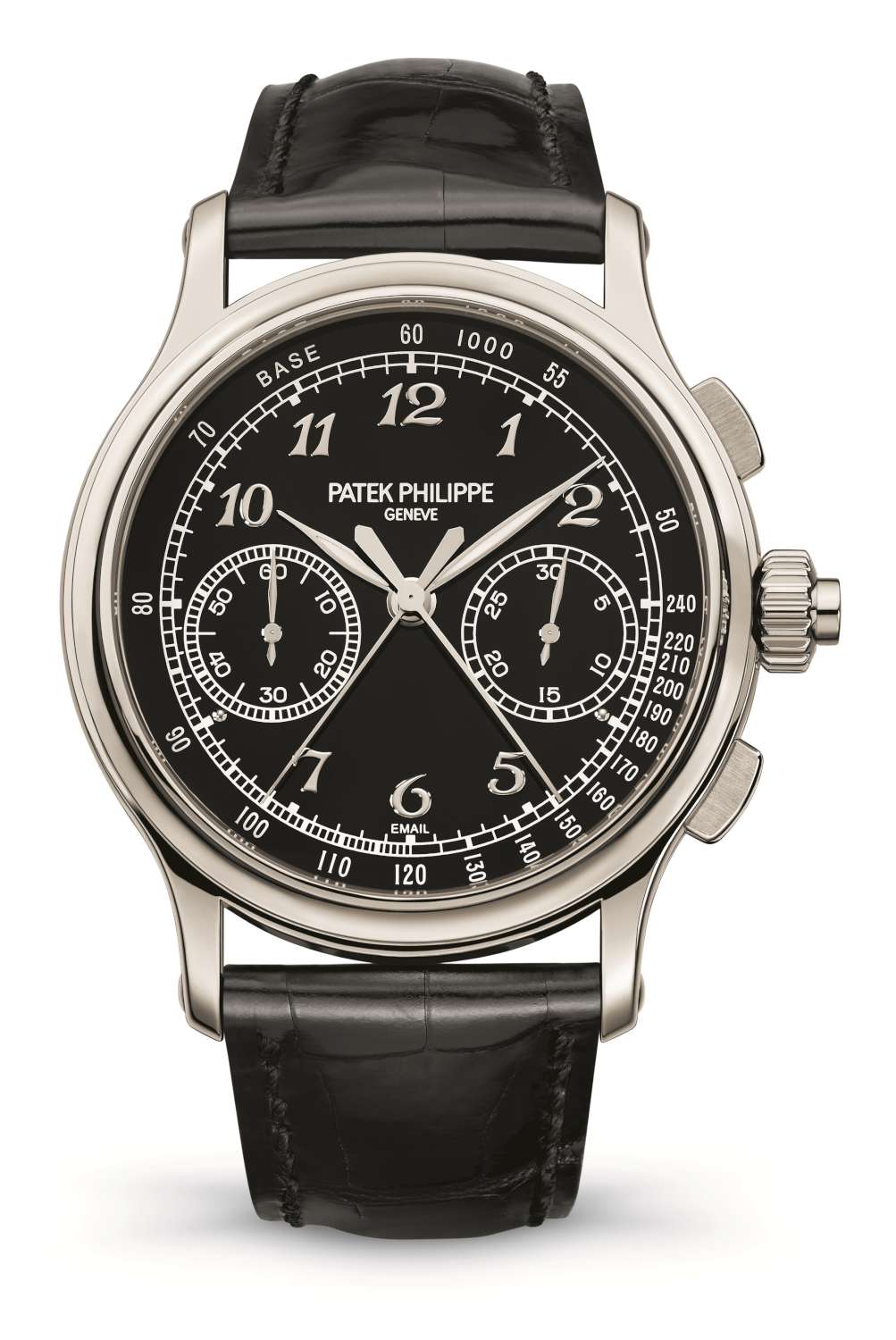
A watch with seven patents
This split second chronograph, reference 5370 by Patek Philippe, is part of the brand’s tradition, because their first chronograph wristwatch presented in 1923 was a split-second model, and this complication (also known as double chronograph or rattrapante chronograph) has always been part of its range in various models. However it is surprising that Patek Philippe’s first chronograph with an in-house movement was introduced only in 2009, and the first in-house split-second chronograph appeared in 2012 in combination with a perpetual calendar. So this piece, reference 5370, is Patek’s first standalone split-second chronograph with in-house movement. The CHR 29-535 PS calibre has 312 parts and it is entirely classical, with two column wheels and a horizontal clutch. It comprises seven patented innovations, amongst which a system that ensures exact alignment between the chronograph and split-seconds hands when they are moving together.
The particular feature of a “Chronographe à rattrapante” is the possibility of taking intermediate chronograph readings while continuing to time a longer event. To start the chronograph, you press the pusher at 2 o’clock, and the two chronograph seconds hands start moving around the dial, perfectly superposed. When you press the pusher in the crown, one of the chronograph hands stops, so that you can read the time elapsed up until that moment, while the other hand continues running. With another press of the pusher at 3 o’clock, the stopped hand flicks forward to join the other hand and they continue their journey together. You can repeat the process as many times as you like but in practice it is useful above all for the first intermediate reading and for an intermediate time of less than 60 seconds. As usual, you stop the chronograph with the pusher at 2 o’clock and reset it with the pusher at 4 o’clock.
Case and dial
The word “email” that appears below the numeral 6 at the bottom of the dial does not indicate some electronic function – heaven forbid – but indicates that the black dial is made in genuine enamel. On this are applied Breguet numerals in white gold, with dial markings in white, and hands with differing finishes: hour and minute hands are leaf-shaped in white gold with SuperLuminova coating, the hands on the two subdials are also in white gold, while the two chronograph seconds hands are in rhodium-coated steel. Patek Philippe pay a lot of attention to legibility and practicality, and this piece is the perfect illustration, with hands and dial markings that are perfectly visible against the black dial. The enamel coating on the gold dial base ensures the deepest black possible, though infinite care is needed when drilling the tiny holes for fixing the attached hour numerals. The dial layout is kept simple by having just two subdials, for continuous seconds and 30 chronograph minutes.
The case is in platinum, with a Top Wesselton diamond inset into the caseband between the lugs at 6 o’clock. The brand’s creative department is led by Sandrine Stern, wife of company president Thierry Stern, and their attention to design detail can be seen in the curves of the caseband, flowing seamlessly right down to the tips of the slender lugs, which are finished with horizontal brushing and have white gold cabochons in correspondence with the strap spring bars.
The case is 41 mm in diameter, 13.56 mm thick, and has a water resistance of 3 bar, 30 metres. The watch has a hand-stitched alligator strap with a deployant buckle in platinum.
Movement
Another Patek Philippe characteristic is the incredible contrast between the simplicity of the dial at the front and the beauty of the movement visible through the sapphire caseback. You strain your eyes trying to work out the relations between the wheels, cams and levers that come to life when you activate the chronograph. The colour palette is also more extensive on the back, with glossy and brushed steel, glints of light on the chamfered edges, components in gold, and the red jewels. The Patek Philippe Seal can also be seen, guaranteeing that the company has subjected the watch to a battery of tests and examinations, including precision of maximum +2/-3 seconds deviation per day, better than COSC (+4/-4), almost as good as the new Rolex standard (+2/-2). The watch runs at 28,800 vph (4 Hertz), and it is manually-wound, with a power reserve of 55-65 hours.
Price
The Patek Philippe split second chronograph, reference 5370, costs 220,000 Swiss francs. Follow this link for a selection of split-second chronograph watches.






